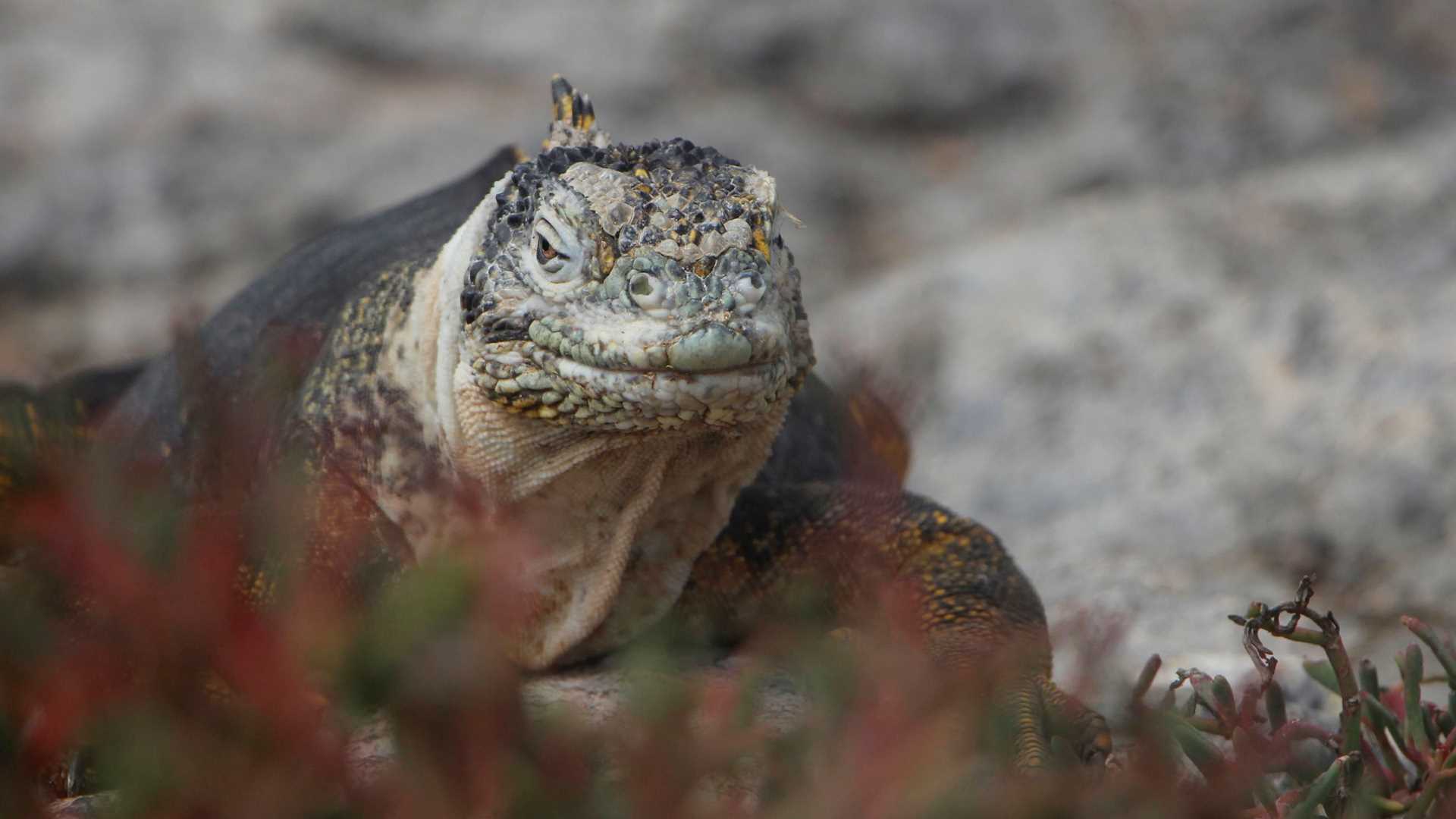After a day full of surprises among tortoise civilization and observations in their natural habitat, we moved east to two different locations. South Plaza is located on the east coast of Santa Cruz and has a completely different ecosystem than the islands previously seen; although the landscape looks barren and rocky, this island is home one of the land iguanas specie, the Conolophus subscristatus. After breakfast we headed on Zodiacs to dry land, when in the distance, two whales swam indifferently close to National Geographic Islander. We approached and identified a female humpback whale and her calf. The swimming display was spectacular, moving its caudal tail vertically, splashing water, or showing us the white underparts when jumping. This event was the delight of our guests, who took pictures or videos of the spectacular sea mammals.
Plaza was formed by several uplifts thousands of years ago and proof of this can be seen in the pieces of coral found along the trail we were on. Since humans settled on the island, the main predator on Plaza, which was the Galapagos Hawk, is no longer present. Today this space has been occupied by some owls who were spotted under bushes or sharing habitat with some land iguanas. Land iguanas feed on prickly pear’s flowers or fruits when they fall to the ground. Although South Plaza’s fauna is fascinating to observe, its flora creates a striking contrast and presents one of the most colorful landscapes of all the islands. The cactus adds its green foliage, and the Galapagos carpet weed turns red to reserve all the energy it can during the dry season.
During the afternoon our home moved to Santa Fe, which is just two hours away from Plaza. The first group departed to kayak around the bay where we anchored, others left for a long hike along the cliffs of the island. I disembark with the first group of hikers on a landing beach. We were welcomed by curious sea lions and the Conolophus pallidus or Santa Fe Iguana land iguana, which is restricted to this island. Inland trails led to communities of other animals like snakes, lava lizards, finches, doves, and more. From the top of the cliff the view was spectacular. The soil in the surrounding area was soft and perfect for lizards and iguanas nesting. We observed several of them along the forest of palo santo trees. After a great day we came back on board to celebrate life and the unique creatures observed today.







